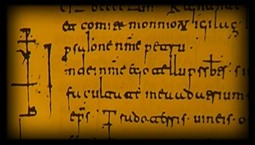|
Regions Of Chile
Chile is divided into 16 regions (in Spanish language, Spanish, ''regiones''; singular ), which are the country's first-level administrative division. Each region is headed by directly elected Regional Governor (Chile), regional governor (''gobernador regional'') and a regional board (''consejo regional''). The regions are divided into Provinces of Chile, provinces (the second-level administrative division), each headed by a governor (''gobernador'') appointed by the President. There are 56 provinces in total. Provinces are divided into Communes of Chile, communes (the third and lowest level administrative division), which are governed by municipal councils. Naming Each region was given a Roman numeral, followed by a name (e.g. ''IV RegiГіn de Coquimbo'', read as "fourth region of Coquimbo" in Spanish). When the regional structure was created, Roman numerals were assigned in ascending order from north to south, with the northernmost region designated as I (first) and the southern ... [...More Info...] [...Related Items...] OR: [Wikipedia] [Google] [Baidu] |
Santiago Metropolitan Region
Santiago Metropolitan Region () is one of Chile's 16 first-order administrative divisions. It is the country's only landlocked administrative region and contains the nation's capital, Santiago. Most commercial and administrative centers are located in the region, including Chile's main international airport, Arturo Merino BenГtez International Airport. With an area of and population over seven million, it is Chile's most populated and most densely populated region. History The region's history of European influence started in 1542, a few days after Santiago was founded. When the Santiago cabildo was built, its function was to supervise the entire territory. Later, with the creation of the cities of La Serena and ConcepciГіn and the creation of their respective cabildos, its territorial reach was reduced. On 30 August 1826, 8 provinces were created, with the Santiago Province being one of them, but it wasn't until 1980 that the Metropolitan Region was created. Geography ... [...More Info...] [...Related Items...] OR: [Wikipedia] [Google] [Baidu] |
BiobГo Region
The BiobГo Region ( ) is one of Chile's sixteen regions (first-order administrative divisions). With a population of 1.5 million, thus being the third most populated region in Chile, it is divided into three provinces: Arauco, BiobГo and ConcepciГіn. The latter contains its capital and largest city, ConcepciГіn, a major city and metro area in the country. Los ГЃngeles, capital of the BiobГo Province, is another important city in the region. Geography The Region of the BiobГo is bordered on the west by the Pacific Ocean, on the east by Argentina, on the north by the Chilean Г‘uble Region, and on the south by the AraucanГa Region. The Region has been hit by many Chilean earthquakes, including the most powerful earthquake ever recorded (in 1960) and the great earthquake of 2010. Many communities in the region were greatly affected by the earthquake of 2010 and the subsequent tsunami. That earthquake damaged Talcahuano and Dichato; the tsunami destroyed much of wh ... [...More Info...] [...Related Items...] OR: [Wikipedia] [Google] [Baidu] |
TarapacГЎ Region
The TarapacГЎ Region (, ) is one of Chile's 16 first-order Administrative divisions of Chile, administrative divisions. It comprises two provinces, Iquique Province, Iquique and Tamarugal Province, Tamarugal. It borders the Chilean Arica y Parinacota Region to the north, Bolivia's Oruro Department and PotosГ Department on the east, Chile's Antofagasta Region to the south and the Pacific Ocean to the west. The port city of Iquique is the region's capital. Much of the region was once the TarapacГЎ Province (Peru), TarapacГЎ Province of Peru, which was annexed by Chile under the 1883 Treaty of AncГіn at the close of the War of the Pacific. The region was important economically as a site of intense Chile saltpeter, saltpeter mining, before synthetic nitrate manufacturing became possible. A number of abandoned mining towns can still be found in the region. The present day TarapacГЎ Region was created in 2007 by subdividing the former TarapacГЎ Region under Law No. 20,175, which w ... [...More Info...] [...Related Items...] OR: [Wikipedia] [Google] [Baidu] |
Spanish Language
Spanish () or Castilian () is a Romance languages, Romance language of the Indo-European languages, Indo-European language family that evolved from the Vulgar Latin spoken on the Iberian Peninsula of Europe. Today, it is a world language, global language with 483 million native speakers, mainly in the Americas and Spain, and about 558 million speakers total, including second-language speakers. Spanish is the official language of List of countries where Spanish is an official language, 20 countries, as well as one of the Official languages of the United Nations, six official languages of the United Nations. Spanish is the world's list of languages by number of native speakers, second-most spoken native language after Mandarin Chinese; the world's list of languages by total number of speakers, fourth-most spoken language overall after English language, English, Mandarin Chinese, and Hindustani language, Hindustani (Hindi-Urdu); and the world's most widely spoken Romance language ... [...More Info...] [...Related Items...] OR: [Wikipedia] [Google] [Baidu] |
Roman Numerals
Roman numerals are a numeral system that originated in ancient Rome and remained the usual way of writing numbers throughout Europe well into the Late Middle Ages. Numbers are written with combinations of letters from the Latin alphabet, each with a fixed integer value. The modern style uses only these seven: The use of Roman numerals continued long after the Fall of the Western Roman Empire, decline of the Roman Empire. From the 14th century on, Roman numerals began to be replaced by Arabic numerals; however, this process was gradual, and the use of Roman numerals persisted in various places, including on clock face, clock faces. For instance, on the clock of Big Ben (designed in 1852), the hours from 1 to 12 are written as: The notations and can be read as "one less than five" (4) and "one less than ten" (9), although there is a tradition favouring the representation of "4" as "" on Roman numeral clocks. Other common uses include year numbers on monuments and buildin ... [...More Info...] [...Related Items...] OR: [Wikipedia] [Google] [Baidu] |
Elections In Chile
Elections in Chile are held countrywide, including the presidency, parliament, regional offices, and municipal positions. Chilean citizens and foreign residents with legal residency of at least five years, who are 18 years or older on election day, are eligible to vote. Previously, voting was voluntary, but since 2023, it has become compulsory. Presidential elections are held to select the chief of state and head of government for a four-year term, allowing for non-consecutive re-election. Candidates can be nominated by political parties or run as independent candidates, requiring a specific number of signatures. Parliamentary elections follow a system of proportional representation, and the country's bicameral Congress consists of a Chamber of Deputies and a Senate. The electoral system for parliamentary elections underwent reforms in 2017, which changed the number of electoral districts and senatorial constituencies. Regional and municipal elections also occur, with direct el ... [...More Info...] [...Related Items...] OR: [Wikipedia] [Google] [Baidu] |
Intendant
An intendant (; ; ) was, and sometimes still is, a public official, especially in France, Spain, Portugal, and Latin America. The intendancy system was a centralizing administrative system developed in France. In the War of the Spanish Succession of 1701 to 1714 the French royal House of Bourbon secured its hold on the throne of Spain; it extended a French-style intendancy system to Spain and Portugal - and subsequently worldwide through the Spanish Empire and Portuguese Empire. Regions were divided into districts, each administered by an intendant. The title continues in use in Spain and in parts of Spanish America for particular government officials. Development of the system in France Intendants were monarchy, royal civil servants in France under the Ancien RГ©gime, Old Regime. A product of the centralization policies of the French crown, intendants were appointed "commissions," and not purchasable hereditary "offices," which thus prevented the abuse of sales of royal offi ... [...More Info...] [...Related Items...] OR: [Wikipedia] [Google] [Baidu] |
ChillГЎn
ChillГЎn () is the capital List of cities in Chile, city of Г‘uble Region, DiguillГn Province, Chile, located about south of the country's capital, Santiago, near the center of the country. It has been the capital of the new Г‘uble Region since 6 September 2015. Within the city is a railway station, an Intercity bus service, intercity bus terminal named MarГa Teresa, and a regimental military base. The city features a modern, enclosed shopping centre in addition to the ChillГЎn Market, an iconic multi-block, open-air farmers' market and street fair where fruits, vegetables, crafts, clothing and other goods are sold. The nearby mountains, such as in Laguna del Laja National Park (Spanish language, Spanish: ''Parque Nacional Laguna del Laja'') and the ''Nevados de ChillГЎn'' (English language, English: 'snowy peaks of ChillГЎn') are popular destinations for skiing, hiking and hot spring, hot springs. Founded by the Spanish conquest of the Inca Empire, Spanish in 1580, the city wi ... [...More Info...] [...Related Items...] OR: [Wikipedia] [Google] [Baidu] |
Itata Province
The Itata Province is one of the three provinces of the Г‘uble Region;, its capital is Quirihue. Communes * Quirihue (11.429) * Cobquecura (1.493) * Ninhue (5.738) *Treguaco Treguaco (), also spelled as Trehuaco (), is a Chilean city and Communes of Chile, commune in Itata Province, Г‘uble Region. The commune spans an area of . Demographics According to data from the 2002 Census of Population and Housing, the Tregua ... (5.296) * Portezuelo (4.953) * Coelemu (16.082) * RГЎnquil (5.683) References {{coord missing, Chile Provinces of Chile Provinces of Г‘uble Region Itata 2018 establishments in Chile 2018 in Chilean law ... [...More Info...] [...Related Items...] OR: [Wikipedia] [Google] [Baidu] |
Punilla Province
Punilla Province is one of the three provinces of the Г‘uble Region of Chile Chile, officially the Republic of Chile, is a country in western South America. It is the southernmost country in the world and the closest to Antarctica, stretching along a narrow strip of land between the Andes, Andes Mountains and the Paci ... Communes * San Carlos * San NicolГЎs * San FabiГЎn * Coihueco * Г‘iquГ©n References {{Provinces of Chile Provinces of Chile Provinces of Г‘uble Region Punilla 2018 establishments in Chile 2018 in Chilean law ... [...More Info...] [...Related Items...] OR: [Wikipedia] [Google] [Baidu] |
DiguillГn Province
The DiguillГn Province is the largest of the three provinces of the Г‘uble Region. Communes * Bulnes *ChillГЎn *ChillГЎn Viejo *San Ignacio * Pinto * El Carmen *Pemuco * Yungay *QuillГіn QuillГіn is a Chilean city and commune and DiguillГn Province, Г‘uble Region. Demographics According to the 2002 census of the National Statistics Institute, QuillГіn spans an area of and has 15,146 inhabitants (7,699 men and 7,447 women). ... References External links Provinces of Chile Provinces of Г‘uble Region DiguillГn 2018 establishments in Chile 2018 in Chilean law {{Г‘uble-geo-stub ... [...More Info...] [...Related Items...] OR: [Wikipedia] [Google] [Baidu] |
Г‘uble Province (1974-2018)
Ñuble Province may refer to: * , a former province (first-level administrative division) of Chile * Ñuble Province (1974–2018), a former province (second-level administrative division) of Chile * Ñuble Region The Ñuble Region (, ) officially the Region of Ñuble (), is — since 5 September 2018 – one of Chile's sixteen regions of Chile, regions. It spans an area of , making it the smallest region in Chile in terms of area, and is administratively ..., a current region of Chile See also * Ñuble (other) {{disambig ... [...More Info...] [...Related Items...] OR: [Wikipedia] [Google] [Baidu] |




